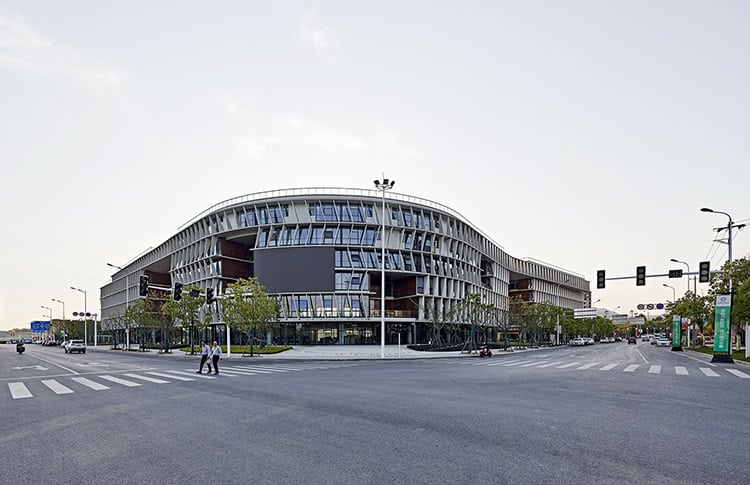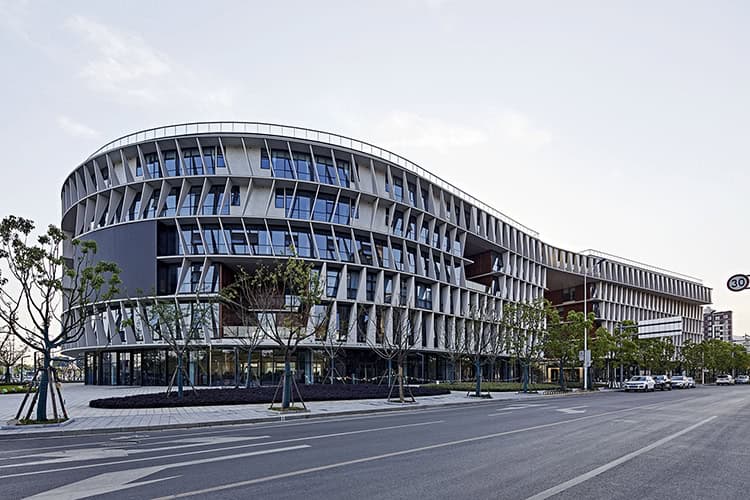Project: Pukou Community Center
Architects: BAU (Brearley Architects + Urbanists)
Location: Pukou, Nanjing, China
Area: 515,483 sf (construction area)
Photographs by: Shu He
A new district on the fringe of Nanjing, formulated on the green dream of modernist planning, and comprised mostly of large autonomous gated housing communities has left Pukou as a well-engineered city but one with limited opportunity for dynamic public life. This project brings an intense moment of urbanity to the district, maximising public space and opening opportunities for the emergence of public life.


The site is on a large block located on a corner of two major streets. A canal wraps around the site forming the rear site boundary. This boundary has been transformed into a green network of public open space.


A freely interpreted and eroded perimeter block typology forms the basis of this project’s architectural figure-ground. With two street edges left in place and the two other sides adjacent to the public open space removed, the private courtyard associated with the typology is protected from the street and connected to a larger network of public open space. Two civic-scaled openings mid-block effectively reduce the block size for pedestrians and provide public access through the courtyard to the public open space beyond.
A tripartite urban fabric was seen as a positive contribution to the city, with: a robust ground floor; four stogeys of middle-storey; and a slightly misbehaving attic that completes the abstraction of typologies. Within the private court, a pavilion folded into the site ensures no reduction in green open space and provides an interesting topography to an otherwise flat landscape.
With collection of mixed programs: active-edge retail and services at ground floor; a 104-room hotel, plus office space in the middle storey; a pre-school of 2,500m2 in the attic; and finally a community centre with swimming pool and auditorium in the courtyard; Pukou Community Centre is a destination, not just a place to find government services.
The façade consists of a series of thin concrete overhangs which form a platform on which to sit a series of folded perforated metal sails that respond to the changing facade orientations – ensuring minimum heat gain through an otherwise glass building. The outcome is a well ventilated and naturally lit building reducing energy consumption and providing high amenity for both staff and visitors.
It is said that urban design’s role is to ensure a great city despite poor architecture. Our ambition for this project is to provide both a high amenity building and landscape, and a more than positive contribution to the city.
-Project description and images provided by BAU (Brearley Architects + Urbanists)
This website uses cookies.